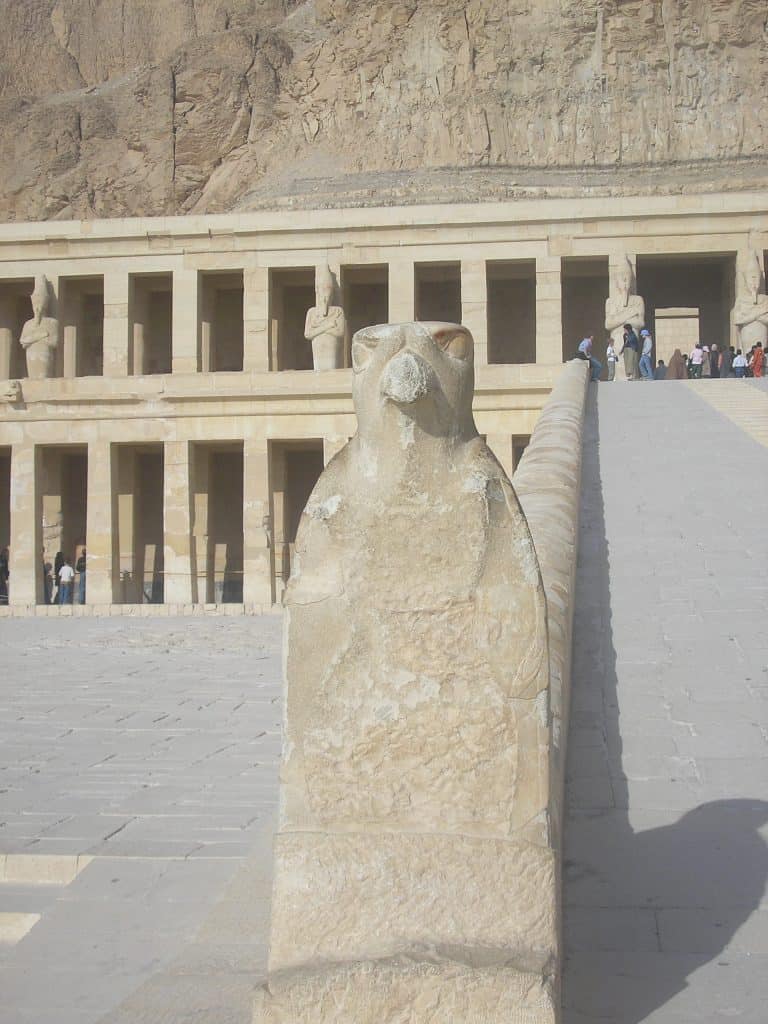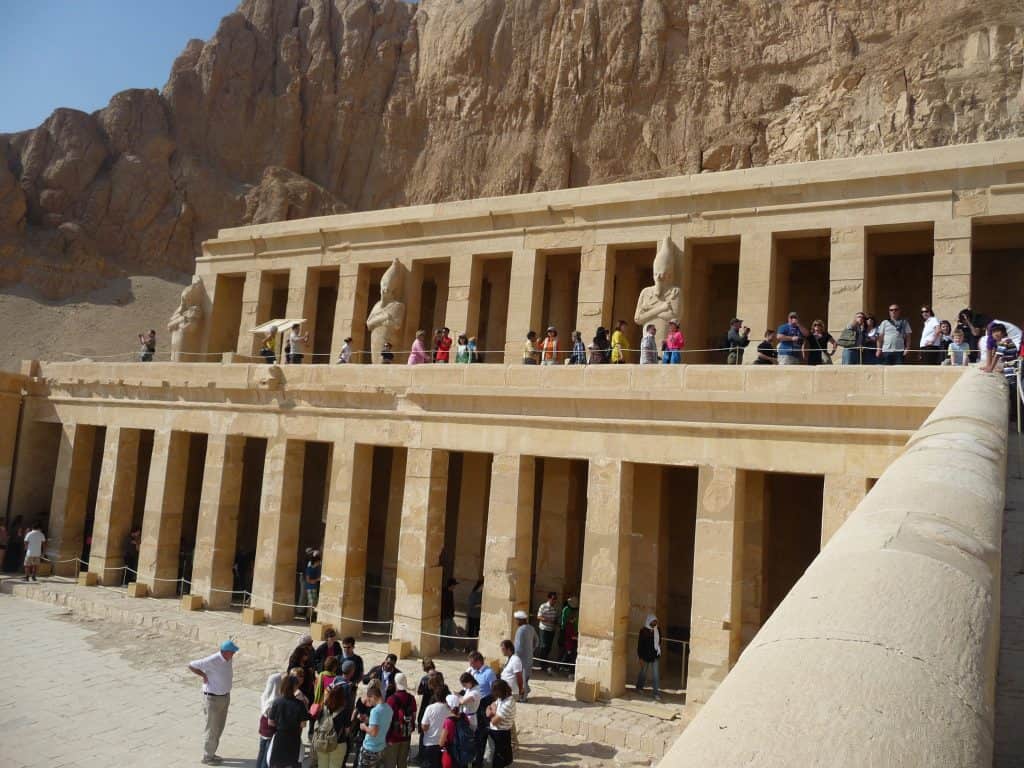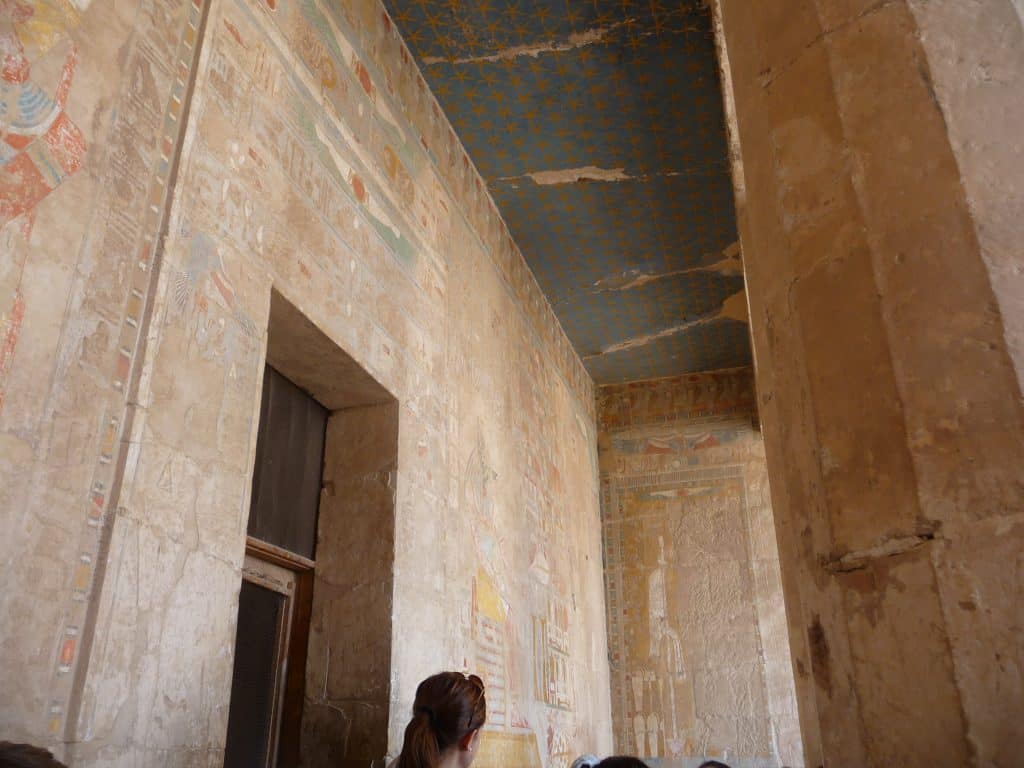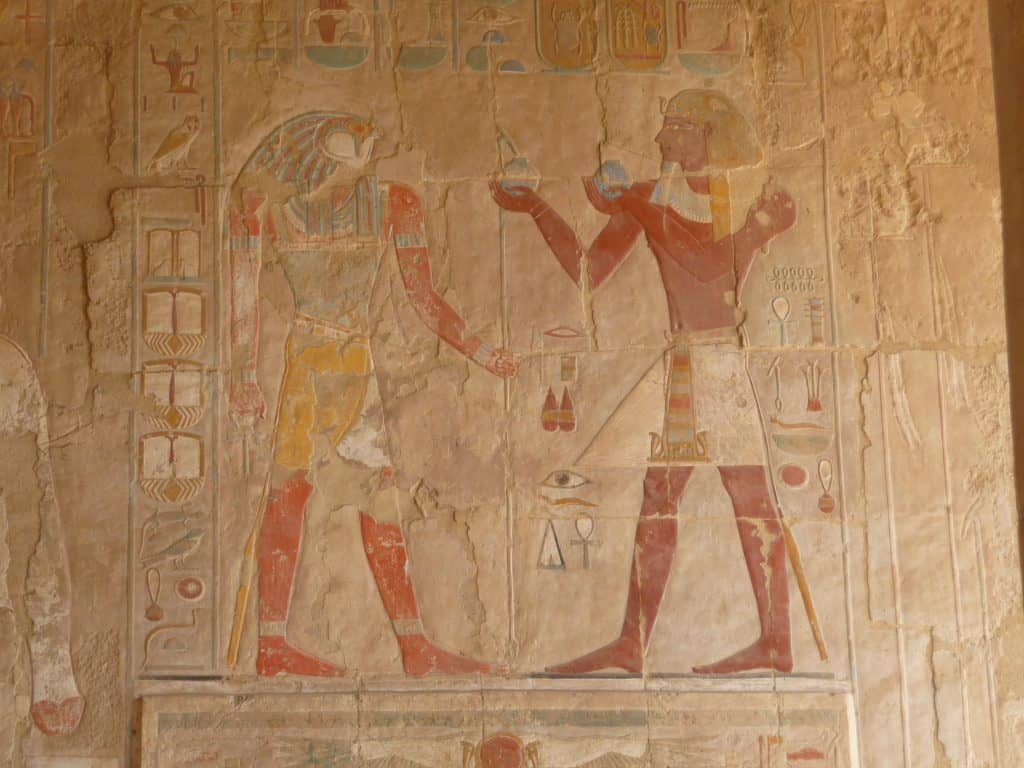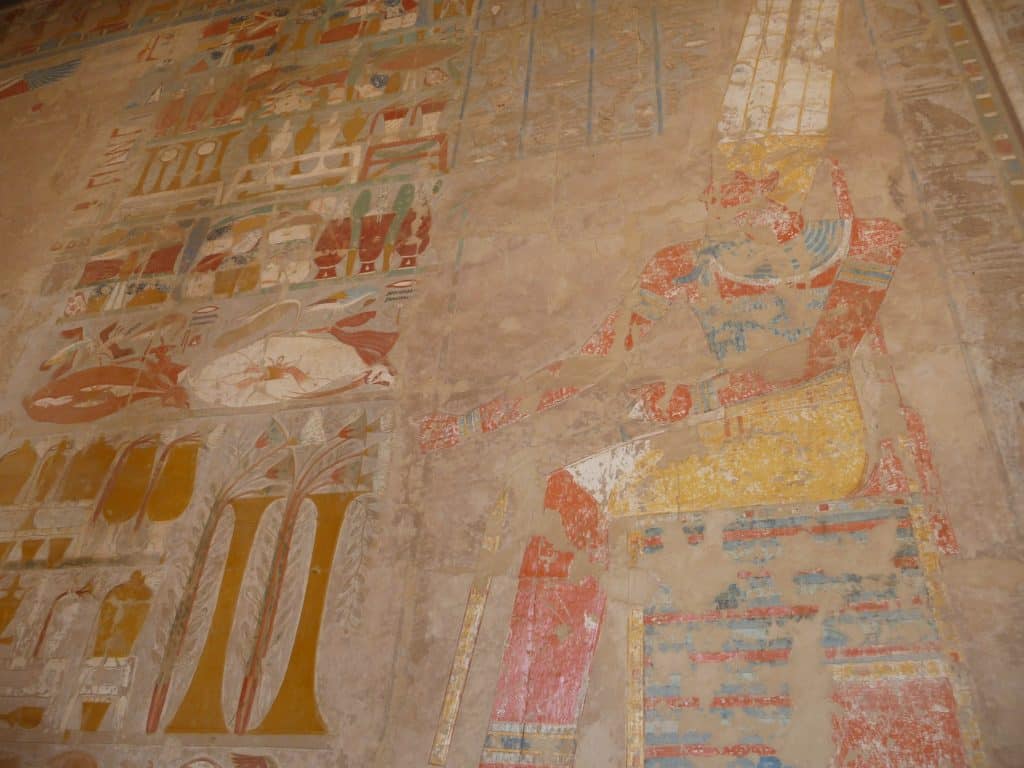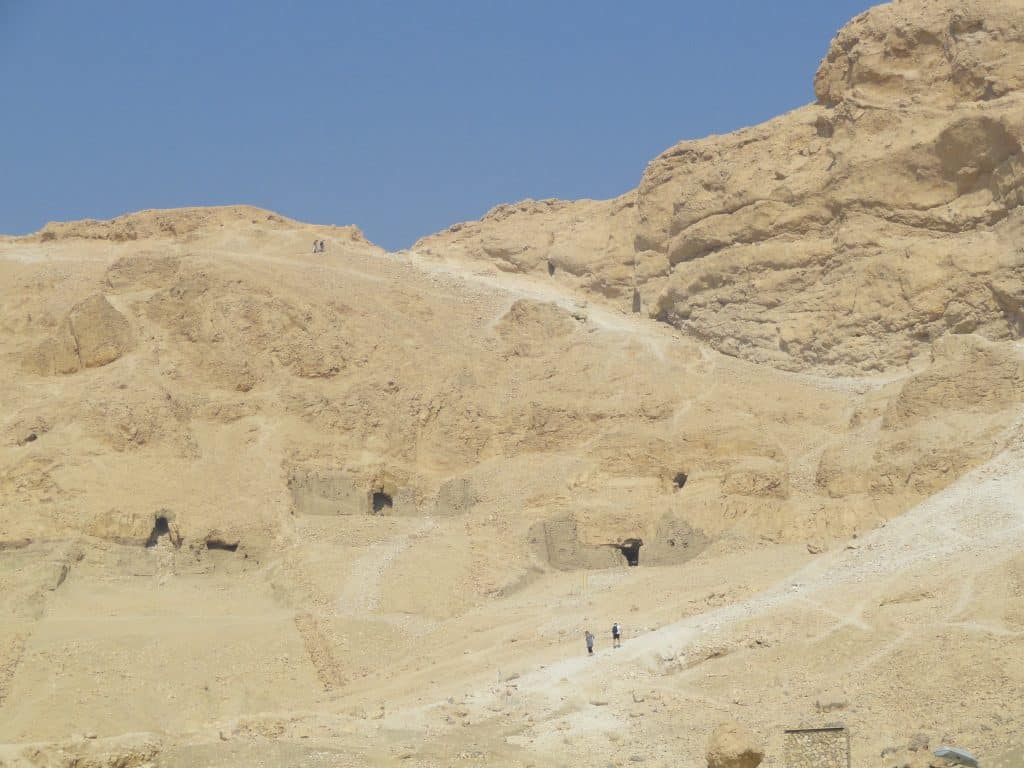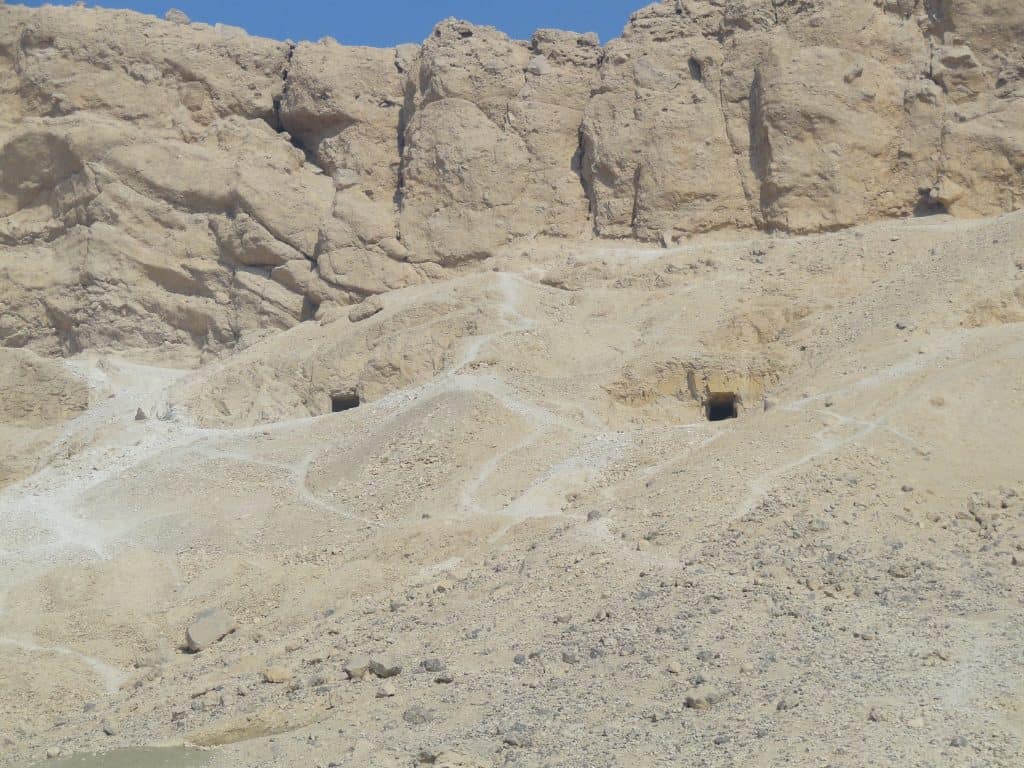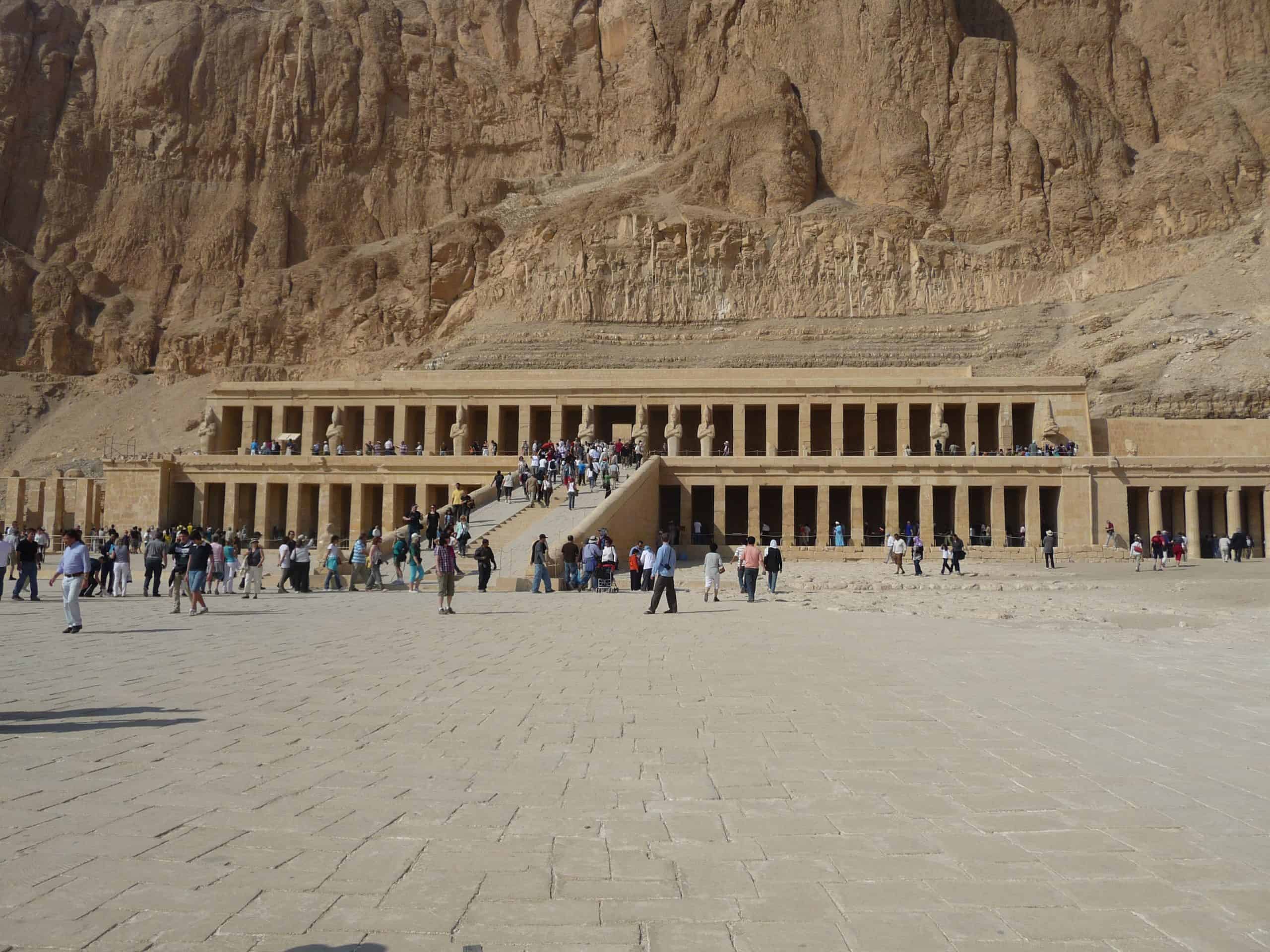
Funerary Temple of Hatshepsut is located under the cliffs of Deir el-Bahari, on the west bank of the Nile a short distance from the Valley of the Kings.
The funerary Temple is dedicated to the god Amon-ra: it is considered today the most beautiful monument of Ancient Egypt.
Royal architect Senemut supervised the construction and design of the Temple, taking as a model the oldest temple in Mentuhotep. The Temple of Hatshepsut consists of a long colonnaded terrace: there are then three levels of terraces that are arranged in a total height of 35 meters. Each level forms a double row of square columns.
All the terraces are connected to each other by long ramps while inside the temple it is possible to admire bas-relief sculptures that tell the story of the divine birth of a female pharaoh (new for the time).
Other texts and images tell of other admirable feats, such as an expedition to the village of Punt, an area on the Coast of the Red Sea.
The Temple of Hatshepsut is considered a meeting point between what was supposed to be Egyptian architecture and classical architecture (Greek and Roman).
It is a real turning point for Egyptian architecture, which leaves the megalithic geometry of the Old Kingdom.
The Temple of Hatshepsut will be a starting point for all the temples of the New Kingdom.
The Valley of the Kings is located near Luxor, less than 3 km from the west bank of the Nile and is the area that from the eighteenth was chosen for the burial of the rulers of ancient Egypt.
In this area only the Pharaohs were laid while the sons and Queens were buried in the nearby Valley of the Queens.
In addition to geographical and morphological factors, this particular area was chosen as the place of royal burials as it was believed that the goddess Hathor was the protector of the Theban mountainous area buy reality, the site is composed of two valleys juxtaposed but, while in the western valley only four burials have been discovered, the eastern one houses 58.
Among the many burials, the most famous are the tomb of Tutankhamun and that of Ramesses II. The tomb of this pharaoh is one of the largest and best decorated tombs in the Valley of the Kings although, due to its location, over the centuries it must have suffered many floods. The burial chamber has a vaulted ceiling while, in the side chamber, you can see Osiris carved in high relief, a particular decoration also found in the tombs of his sons.
Valley of the Queens is located southwest of Luxor and is located about a kilometer and a half from the Valley of the Kings. This necropolis was used for the burials of the wives and children of the great pharaohs.
The tombs were found at the beginning of the twentieth century, they are about eighty and are decidedly less imposing than those of the kings. Some of the tombs are very well preserved, in particular that of the beautiful Nefertari, wife of Ramses II.
The tomb of Nefertari is decorated with a pictorial cycle that has been well preserved and that makes it one of the most complete and significant of the new kingdom. The themes are taken from the book of the dead and describe Nefertari’s journey to the afterlife. This tomb differs from the others for its very articulated plan that is close to that of the pharaohs rather than those of the queens, equipped only with a burial chamber.

